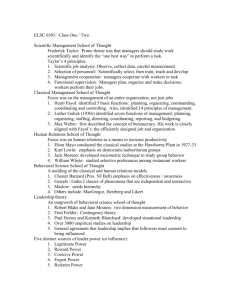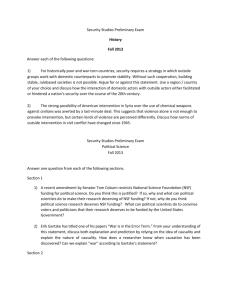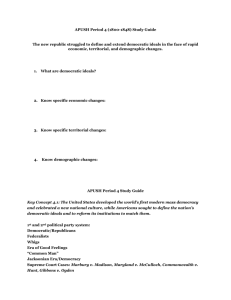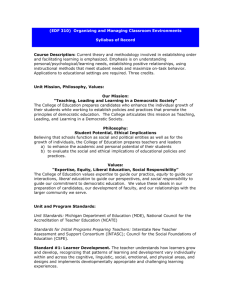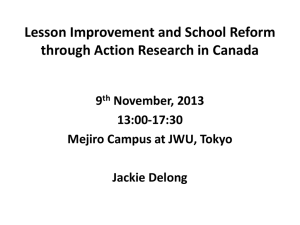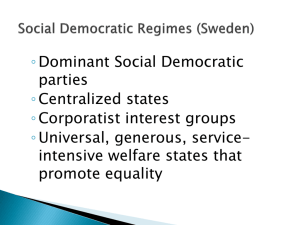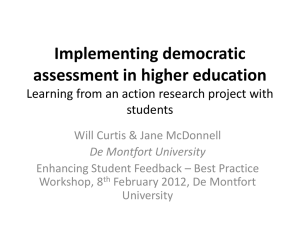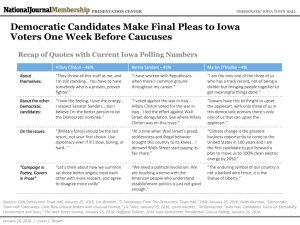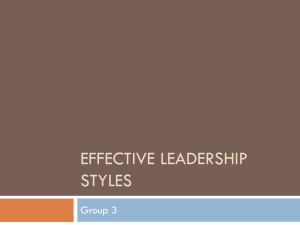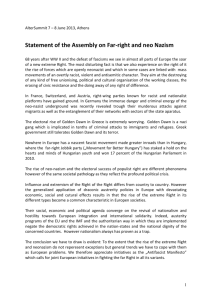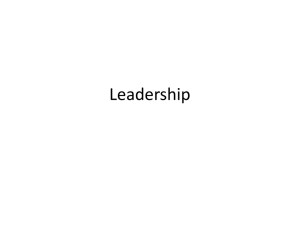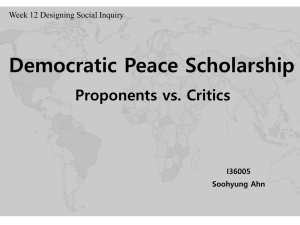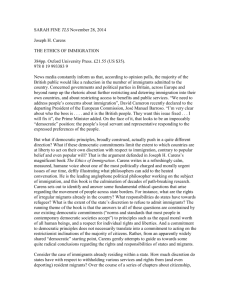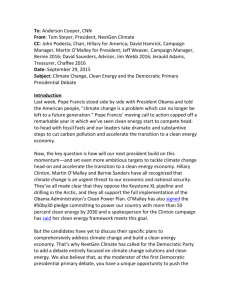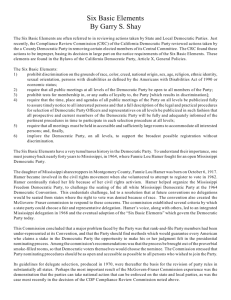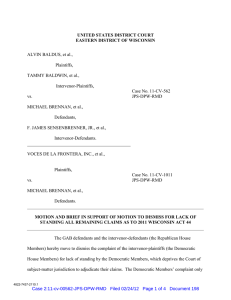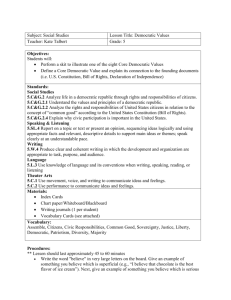Goals for classroom management:
advertisement
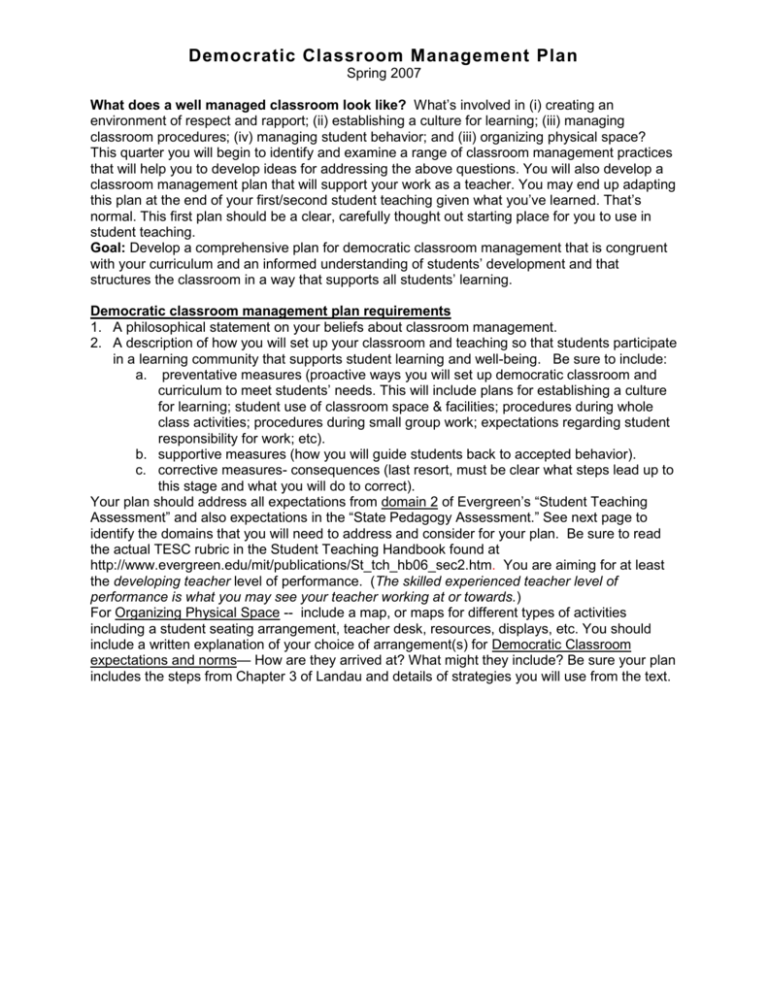
Democratic Classroom Management Plan Spring 2007 What does a well managed classroom look like? What’s involved in (i) creating an environment of respect and rapport; (ii) establishing a culture for learning; (iii) managing classroom procedures; (iv) managing student behavior; and (iii) organizing physical space? This quarter you will begin to identify and examine a range of classroom management practices that will help you to develop ideas for addressing the above questions. You will also develop a classroom management plan that will support your work as a teacher. You may end up adapting this plan at the end of your first/second student teaching given what you’ve learned. That’s normal. This first plan should be a clear, carefully thought out starting place for you to use in student teaching. Goal: Develop a comprehensive plan for democratic classroom management that is congruent with your curriculum and an informed understanding of students’ development and that structures the classroom in a way that supports all students’ learning. Democratic classroom management plan requirements 1. A philosophical statement on your beliefs about classroom management. 2. A description of how you will set up your classroom and teaching so that students participate in a learning community that supports student learning and well-being. Be sure to include: a. preventative measures (proactive ways you will set up democratic classroom and curriculum to meet students’ needs. This will include plans for establishing a culture for learning; student use of classroom space & facilities; procedures during whole class activities; procedures during small group work; expectations regarding student responsibility for work; etc). b. supportive measures (how you will guide students back to accepted behavior). c. corrective measures- consequences (last resort, must be clear what steps lead up to this stage and what you will do to correct). Your plan should address all expectations from domain 2 of Evergreen’s “Student Teaching Assessment” and also expectations in the “State Pedagogy Assessment.” See next page to identify the domains that you will need to address and consider for your plan. Be sure to read the actual TESC rubric in the Student Teaching Handbook found at http://www.evergreen.edu/mit/publications/St_tch_hb06_sec2.htm. You are aiming for at least the developing teacher level of performance. (The skilled experienced teacher level of performance is what you may see your teacher working at or towards.) For Organizing Physical Space -- include a map, or maps for different types of activities including a student seating arrangement, teacher desk, resources, displays, etc. You should include a written explanation of your choice of arrangement(s) for Democratic Classroom expectations and norms— How are they arrived at? What might they include? Be sure your plan includes the steps from Chapter 3 of Landau and details of strategies you will use from the text. Domain 2 “The Classroom Environment” of MIT’s Student Teaching Assessment Rubric A: Creating an Environment of Respect and Rapport - Elements: democratic classroom management system; teacher candidate interaction with students; and response to student interaction. B: Establishing a Culture for Learning - Elements: importance of the content; and expectations for learning and achievement. C: Managing Classroom Procedures - Elements: management of instructional groups; management of transitions; management of materials and supplies; performance of noninstructional duties; and supervision of volunteers and paraprofessionals. D: Managing Student Behavior - Elements: expectations; monitoring of student behavior; and response to student misbehavior. E: Organizing Physical Space - Elements: safety and arrangement of furniture; and accessibility to learning and use of physical resources State Pedagogy Assessment Students participate in a learning community that supports student learning and well-being. Democratic Classroom Students participate in the development of classroom behavioral expectations and norms (e.g., provide input regarding rules or procedures; are involved in conflict resolution). Respect Classroom interactions between students and teacher candidate or between peers reflect respect for others. Learning Community Students support one another in group learning activities and include low-status/historically marginalized students. Self-Directed Learning Students express their opinions and provide suggestions regarding their own learning. Diverse Perspectives Students show respect for multicultural and gender perspectives expressed by others. Heterogeneous Groups Students engage in a variety of learning experiences including heterogeneous cooperative learning groups that build and recognize academic competence of students, including lowstatus/historically marginalized student
